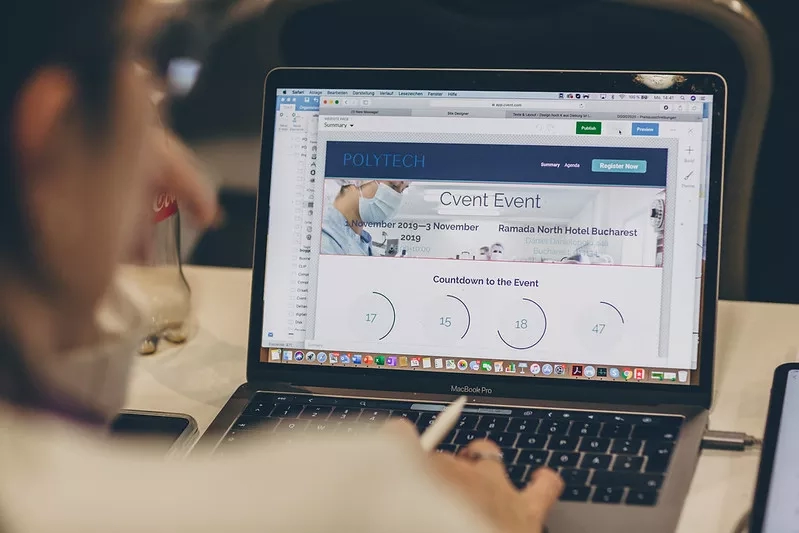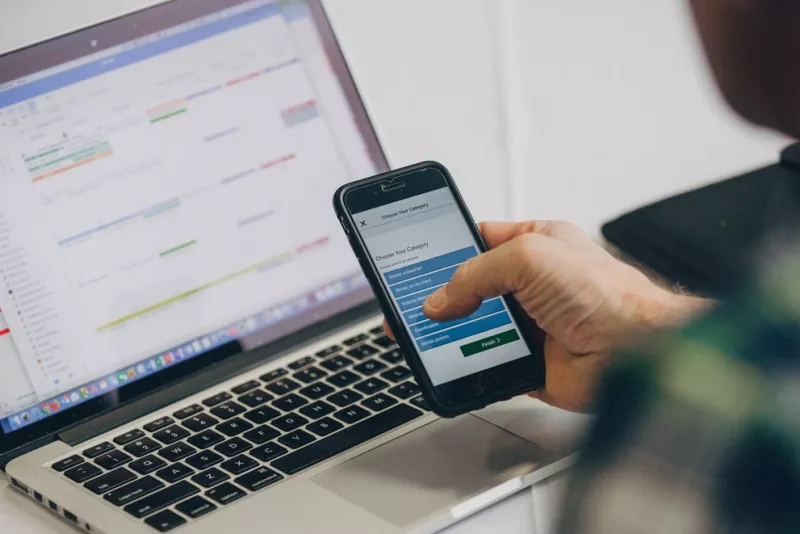Your content is the heart of your event, which is why when you host a virtual event, your content has a big role to play. It is the driving force behind registrations and audience engagement. Whether you are faced with pivoting your in-person event content to virtual or merely looking to amplify event content as a part of your marketing plan, understanding how to develop and deliver content for both online and offline purposes is key to creating a content strategy that will yield results in the short, medium and long term. In this post, we look at how to leverage content for virtual events.
In this blog post, we’ll cover:
Curating Content: Firm Foundations
To deliver impactful content, you need to understand who it’s for. Marketing tools like audience segmentation and targeting can help you decide on the type of information to convey. For example, you wouldn't want to run a live webinar featuring product-specific content when your audience is more interested in high-level thought leadership content.
Sometimes, deciding to make the switch to virtual occurs at the last minute as a response to crises or events out of your control. If that’s the case, it may be tempting to mirror the original in-person event and use the exact same content, but a virtual event is not the same as an in-person one. Using the same content would likely result in a poorer overall event experience for your attendees. So, where do you begin?
Set Objectives
Whether trying to determine which pieces of content to utilize at your events or wondering how to use content across your in-person and virtual events, you’ll need to begin by setting strong goals and objectives.
Here are some basic questions to get you started:
- Why are we doing this event?
- Who is it for?
- What do we want to gain?
- What do we want our audience to learn?
- How will we measure success?
Some further goals include:
- Is this an ad-hoc event or does this event form part of a wider sales, marketing, or organizational strategy?
- Do you want to share knowledge and information, or are you trying to build brand awareness or demonstrate products?
- What does your audience want to learn about?
- Do you want attendees to be able to communicate with one another?
- How will you track attendance, engagement, and attendee satisfaction?
Clear KPIs inform your content agenda and help you determine the right timing, format, structure, audience, hosts, and much more for your virtual events. KPIs better position you to decide which online platform is best suited for delivering on your core objectives or, which live elements need a virtual add-on like live polling or virtual breakout rooms. Finally, you’ll be able to communicate clear objectives to your internal stakeholders as well as to your intended audience.
Understand Your Audience
When it comes to your audience, you need to think - is this content suitable for all or just one or two segments of my target audience? When running large in-person events, content tracks are frequently created for different audience types. This is something you may wish to do for your virtual event. Maybe you know that your audience is competitive by nature or tend to enjoy the fun elements of your events. In that case, you may wish to add gamification to your virtual content. If you know your audience is simply seeking information, then you could offer a basic virtual option that allows audiences to watch videos uploaded to a dedicated microsite.
Content Selection
As virtual event platforms attempt to meet an increase in demand, many planners find themselves thinking more creatively about virtual event content. While you knew exactly what you were planning to deliver at your in-person event that would keep your audience engaged, a new medium provides the opportunity to think outside the box. Use this as a chance to brainstorm ways to keep attendees from nodding off at their computers and feel as if they’re getting the same value virtually as they would have in-person.
Content Audit
When reviewing your existing content, take a moment to map your content selections against your KPIs and audience needs. It’s a good time to understand if the content is available in various formats - infographic, slideshow, video, eBook and so on. This will help you offer downloadable content alongside your virtual events which will stretch the life of your content and achieve the maximum impact of unified messaging.
The audit should help you determine:
- Is the content valuable for an online audience?
- Is it relevant?
- Is it tone-deaf?
- Will your audience be able to use the information in the short to medium-term?
Once you’ve assessed your existing event content, consider digging into your wider content repository. There may be campaign content from three years ago that would work well for this new event. It’s time to use it!
Also, find your timeless, high-quality evergreen content and look at how you can change the format e.g. from infographic to Pinterest images or blog to eBook. Check your site analytics to identify top-performing blog posts. You can take a group of related posts and collect them into a single summary post or turn them into an eBook.
Filling in the blanks
Where you discover content gaps, you'll need to move fast if you are making a quick shift to virtual events.
You can follow these steps to get things going:
- Put a small cross-department team together to go through ideation, research, and content creation quickly.
- Meet regularly with defined goals and strong action points.
- Identify your content writers and content approvers.
- Develop content in a way that can be used in a variety of formats.
- Keep senior stakeholders informed as frequently as possible to move through approval processes swiftly.
- Keep your sales team up to date, so they deliver the same messaging as your content and understand what’s coming.
A sudden shift doesn't allow for 100% new content. Identifying what is necessary, using what you have, and focusing on the format of content delivery is your best use of time.
Content Delivery
Based on the challenges of the virtual environment, you need to focus on how to structure online content to provide the best experience.
You’ll need to consider things like:
- Live vs pre-recorded events
- Streaming vs on demand
- Talking head vs on-screen presentation
- Visual vs audio only
- Interactive vs one-way communication
This is a good time for the marketing and event teams to collaborate fully. Marketing leaders regularly consider these content delivery formats to achieve the goals of yearly, quarterly or even monthly marketing campaigns.
Format choices
Just like physical meetings and conferences, virtual events come in many formats and use a variety of technologies. You’ll need to think about the technical capabilities of the planning team and audience, as well as issues like accessibility. Your content may need to be translated to reach a global audience or be delivered in a way that assists those who are visually challenged or hearing impaired.
In our post, The Ultimate Guide to Virtual Events, we cover the types of virtual events available to you. From webinars with inbuilt capabilities that allow Q&A and the choice to present live or pre-record video to virtual conferences built around live, complex agendas that include keynotes, sessions, breakouts, and more.
Event technology for virtual events
Depending on the size and complexity of your event, you can use event marketing and management technology to accommodate pretty much any virtual format you have in mind. Event tech makes it easy to communicate changes to attendees using the event website and email marketing. A mobile event app not only connects attendees, but also allows you to share content and event information, send push notifications, and more.
Some tips about your virtual event format choices:
- Shorten the duration of your sessions. Attention spans are shorter online.
- Virtual interactive sessions work best when attendees can see one another and can chat and ask questions.
- Keep your panel sessions – they still work online. A variety of speakers makes for a more engaging discussion.
- Test speaker backgrounds, or “venue,” ahead of time. The camera only sees a one-by-one-meter square, so think about what's going to make it into that space and how it will appear to viewers.
Drive Focus and Engagement
If you have decided to adopt hybrid events, you’ll need to decide on digital content elements that can add value to a live physical event. For example, how many times have you sat at your desk waiting for the live stream of a conference keynote to begin while being forced to watch an empty auditorium slowly fill up or, even worse, stare at a visual place holder?
Here are a few virtual event ideas to drive focus and engagement:
- Engage virtual audiences during the in-person welcome with live polls, feedback surveys, quizzes, or session preview videos.
- Use the mobile event app to send push notifications.
- Use gamification.
- Offer a variety of content.
5 Different Content Formats to Hold Audience Attention
Let's look at five different content formats that hold the attention and keep online viewers from tuning out and logging off. The right mix of these will provide you with an engaging program plus a library of assets that can be reused and redistributed after your event.
1. Thought leadership
Interviews with industry leaders and visionaries in their field will provide virtual viewers with deep, insightful thought-leadership. Find speakers who will draw boost virtual registrants. Interviews with thought-leaders via webinars or over Skype or Zoom can be recorded, repackaged and posted to the event microsite.
2. Research-based
Marketers, researchers, academics and scientists are just a few of the possible speakers who may have conducted interesting studies to share with your audience. Or, consider using your visitor database or online registrants to conduct a survey and deliver the results in a dedicated virtual session or segment it into bite-sized deliverables. Administering the survey before the event will give these audiences an added reason to attend and discover the results.
3. Client insight
Tap into your client’s insight for case studies, white papers, video tutorials and other forms of shareable online content. When deciding whether this pre-existing content will provide added value for a wider virtual audience, consider the community cross-over, along with your client’s social reach.
4. Product or service training
Staging online product or service training reduces the amount of travel and printed materials involved in the process of giving employees the knowledge and tools to do their jobs more effectively. Cut down the tedium and create virtual training programs that include video scenarios and augmented reality-powered simulations.
5. Recorded sessions
Recorded sessions can either be from a physical conference or event or bespoke to the needs of your virtual audience. Speakers who may not feel completely comfortable presenting live online may prefer this approach. Consider editing recorded sessions to make content punchier and more engaging. UK viewers going online to watch the keynote from the US division of your company, for example, may not need to watch the preamble or may like the choice to watch the Q&A as a separate piece of video content.
Who Will be Hosting Your Events?
Again, just like physical conferences, virtual events require experienced hosts. However, unlike in a live environment, the chosen host must be comfortable delivering content live to a camera without a script and tailoring the content to live and virtual audiences, if required. For example, if your hybrid conference has been live-streaming a keynote session and your physical audience is about to break for coffee or select different workshops, your host should be not only able to inform delegates in the room what is happening, but also instruct online viewers what content they can engage with while waiting for the next live stream.
Choose confident speakers
The same is true for your speakers as it is for your host. There’s a big difference between a speaker who can deliver content live onstage to a participatory audience and someone who can present engagingly to a video camera or webcam while reacting in real-time to questions appearing on their screen. When devising your virtual content, select speakers based on their experience as well as their subject expertise.
Content Marketing
It is beneficial to let your internal and external stakeholders know what they can expect from you. Bring them along on the journey with you and build anticipation. Don’t wait until your virtual event opens to share valuable information. Tease out engaging content through guest blogs, speaker videos, and social media posts, to give your audience a taste of what’s to come. By asking speakers to do a teaser piece to camera to promote their session, you’ll also be able to review their online presenting style and camera set-up and make any suggestions for improvement before they go live.
Did You Win, Lose or Draw?
Once your event is over, take a moment to take stock of how it went. This is the moment where you can look at what worked, what almost worked, and what could've been done better. Allow your attendees the opportunity to provide feedback. Have a look at the questions they asked during the event as well as in your post-event survey. Check in with your sales or account management teams as they will often receive verbal feedback. This information should help you understand what to change for future virtual events. Some things may just need a slight adjustment to make them work and others you may want to drop altogether.
Pivot to Online
Planners and marketers should always look to provide varied content, in different formats, through a mixture of channels to deliver the highest impact for attendees alongside the best return on investment for the planner. When virtual has played a key role in the event strategy from the start, it is often easier to take the digitized elements and pivot them into fully-fledged virtual experiences. Remember, whether you’re offering downloadable videos, live webinars, interactive training, or a full-blown virtual conference with a choice of content streams, it’s your content that will make or break your virtual event offering. So, keep it simple, keep it bite-sized for our ever-shortening attention spans. Make sure it's rehearsed, make sure it's engaging, presented by people who know how to interact with a virtual audience they can't see. But most of all, keep it varied.
Adding Virtual Events to Your Event Program
There is a risk that the virtual environment will limit natural in-person event behavior while encouraging bad habits. When organizing virtual events, planners can easily slip into the mistake of providing the technology for people to connect, but not guiding attendees on how they can share ideas and content. Engagement, networking, open discussion, and content sharing should be some of your key goals for your attendees no matter the type of event you are organizing. And in an environment where some of these goals are more challenging than others, your content plays a more significant role than ever before. Get it wrong, and virtual audiences will soon become distracted by their email and social media feeds. Get it right, however, and you will boost engagement before, during, and after the event, grow a virtual audience, develop a library of shareable content, plus attract more sponsorship and grow alternative revenue streams.
Want to learn more about virtual events? Check out The Ultimate Guide to Virtual Events.








